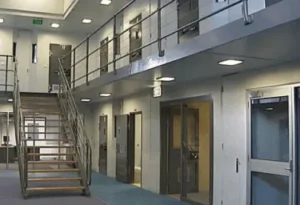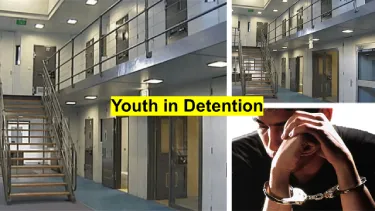Description:
Explore youth incarceration crisis in Australia, its causes, and solutions for a more compassionate system using Australia’s monetary sovereignty.
Introduction
Australia faces a growing crisis in youth incarceration, with rising numbers of young people entering detention centres. This article delves into the reasons behind this trend, explores the new detention centre at Woodford, Queensland, and examines the underlying causes driving youth towards anti-social behaviour and crime. Despite political promises to end child poverty, the situation has worsened. This comprehensive guide looks to inform and educate readers about these pressing issues and the urgent need for reform.
The Rising Trend of Youth Incarceration
Overview of Youth Incarceration Rates
Youth incarceration rates in Australia have been fluctuating. On an average night in the June quarter of 2023, 812 young people were in detention, a decrease from 941 in the June quarter of 2019. However, certain trends remain concerning, such as the high rates of detention among First Nations youth (AIHW) (AIHW).
New Youth Detention Centres: A Solution or a Problem?
The Queensland government’s decision to build a new youth detention centre in Woodford raises questions about the approach to juvenile justice. While the government argues that new facilities are needed to accommodate rising numbers, critics argue that this approach addresses the symptoms rather than the root causes of youth crime. The cost of constructing and supporting these centres is significant, diverting resources from preventive measures that could more effectively reduce youth crime.
Case Study: Woodford Youth Detention Centre
The new detention centre at Woodford is designed to house up to three hundred young offenders. While it aims to provide a safe and secure environment, concerns about the long-term impact on the youth incarcerated there persist. Evidence suggests that incarceration can lead to higher recidivism rates and negatively affect young people’s mental health and prospects.
Underlying Causes of Youth Crime
Socioeconomic Factors: Poverty and Unemployment
Poverty is a significant driver of youth crime. Young people from low-income families are more likely to engage in criminal activities due to limited opportunities and resources. Unemployment rates among youth are also higher, contributing to feelings of hopelessness and frustration.
Family Dynamics: Domestic Violence and Broken Homes
Family dynamics play a crucial role in shaping a young person’s behaviour. Domestic violence and broken homes can lead to emotional and psychological issues, increasing the likelihood of engaging in anti-social behaviour. Lack of parental supervision and guidance further worsens the problem.
Mental Health Issues: Access to Services
Mental health issues are prevalent among incarcerated youth, with many experiencing conditions such as depression, anxiety, and trauma. Unfortunately, access to mental health services is often limited, leading to untreated conditions that can drive criminal behaviour.
Substance Abuse: Drug and Alcohol Influence
Substance abuse is another critical factor contributing to youth crime. The influence of drugs and alcohol can impair judgment and increase the propensity for risky and criminal behaviour. Many young offenders have a history of substance abuse, highlighting the need for targeted intervention programs.
Systemic Issues: Inequality and Lack of Community Support
Systemic issues, such as inequality and lack of community support, also contribute to the rise in youth crime. Young people in marginalized communities often face discrimination and limited access to education, healthcare, and recreational activities, which can lead to feelings of disenfranchisement and rebellion.
Comprehensive Policy Reform and Community-Based Approaches
Failure to Address Root Causes
The current approach to youth crime, focused on incarceration, does not address the root causes. There is a lack of comprehensive government initiatives targeting poverty, family support, mental health services, and substance abuse prevention. Neoliberal policies have worsened these issues, prioritizing corporate interests over community welfare.
Successful Models from Other Countries
Several countries have successfully implemented community-based solutions to address youth crime. For example, Norway’s restorative justice approach focuses on rehabilitation rather than punishment. Programs include counselling, education, and vocational training, which have significantly reduced recidivism rates.
Community-Based Solutions and Restorative Justice
Community-based solutions involve local organizations and stakeholders in creating supportive environments for at-risk youth. Restorative justice programs, which emphasize repairing harm and reintegrating offenders into society, have shown promise in reducing re-offending rates. These programs provide a platform for young offenders to understand the impact of their actions and take responsibility.
Importance of Investing in Education, Mental Health, and Family Support Services
Investing in education, mental health, and family support services is crucial for preventing youth crime. Early intervention programs can find and address issues before they escalate. Providing access to quality education and mental health services can empower young people and offer them alternative pathways.
Comparison of Costs: Detention Centres vs. Preventive Measures
Cost of Building and Running Detention Centres
The cost of building a youth detention centre can run into the tens of millions of dollars. For example, the Woodford Youth Detention Centre’s construction is estimated at $150 million. Additionally, the annual running costs for such a facility, including staffing, maintenance, and security, can amount to $100,000 per youth per year.
Cost of Preventive Measures
In contrast, preventive measures such as community-based programs, mental health services, and educational support are significantly more cost-effective. Programs focused on early intervention and support for at-risk youth can cost as little as $10,000 to $20,000 per youth per year. Investing in preventive measures not only saves public money but also yields better long-term outcomes by reducing recidivism and promoting positive societal integration.
Privatization of Detention Centres and Prisons
Privatization in Australia

Some of Australia’s detention centres and prisons are privately run. Private companies manage these facilities under government contracts, raising concerns about profit motives overshadowing the welfare and rehabilitation of detainees. Critics argue that privatization can lead to cost-cutting measures that compromise the quality of care and support provided to incarcerated individuals.
Summary
Australia’s youth incarceration crisis is a multifaceted issue requiring a comprehensive approach. Building more detention centres addresses the symptoms but not the root causes of youth crime. Socioeconomic factors, family dynamics, mental health issues, substance abuse, and systemic inequality contribute to the problem. By adopting successful models from other countries and investing in community-based solutions, education, mental health, and family support services, Australia can move towards a more compassionate and effective juvenile justice system.
Question for Readers
What do you think are the most critical steps Australia should take to address the root causes of youth crime?
Call to Action
Join the conversation on youth justice reform by sharing your thoughts and advocating for comprehensive policy changes. Explore further resources on our website to learn how you can make a difference.
Social Sharing
If you found this article valuable, please share it with your contacts and on social media to spread awareness and promote change.
References
Restorative Justice Council: https://www.restorativejustice.org.uk
Norwegian Directorate of Correctional Service: https://www.kriminalomsorgen.no
Youth offender rates rise for first time in more than a decade: https://www.abc.net.au/news/2024-05-08/youth-offender-rates-increase-first-time-decade/103279708

